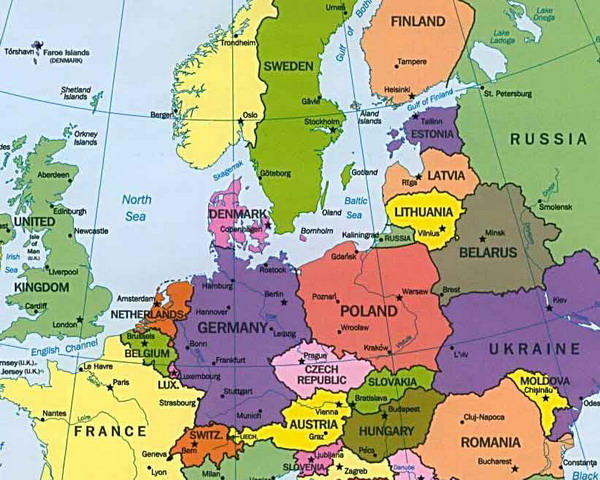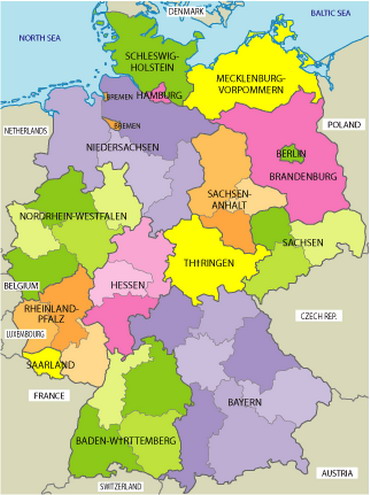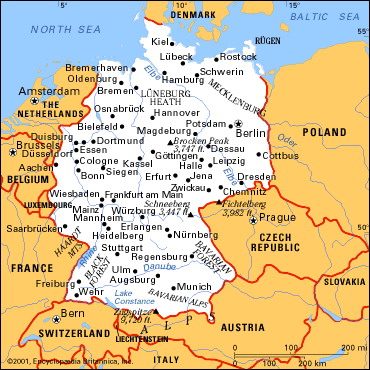Hebrews in Germany
Descendants of the Ten Tribes Moved to the USA! (7 November, 2013, Kislev 4, 5774)
Contents:
1. Introduction: The TTs and Germany
2. An Ethnic-Demographic Outline of German History
3. German Migration to the USA. Some Sources.
4. How Different Were German Immigrants from other Germans?
5. The Sons of Gomer and Germany
6. The Sons of Gomer and Israel
7. Israelites to be Shifted in a Sieve from Amongst Other Peoples.
8. Germany and Edom
9. Genetic Drift and Family Changes
10. Edom and Joseph
====
====
1. Introduction: The TTs and Germany
The TTs (Ten Tribes) are amongst Western Nations.
This is proven from Biblical and Secular Sources.
The TT nations do not include Germany.
Germany does not fulfill the Ephraimite Criteria.
http://www.britam.org/criteria.html
As stated , we do not consider the Germans of Germany to be descended from the Lost Ten Tribes.
On the whole they do not want to be.
Most Germans would not be interested in being considered descendants of Israel. They might even consider any such suggestion as offensive.
There are however numerous inhabitants of North America whose forefathers came from Germany. Many of these are interested in being descended from the Ten Tribes of Israel.
Many of them in fact are such. There was a differential social emigration from Germany. There had been descendants of Israelites in Germany. Most of these migrated to North America and other regions. Those who remained were mainly non-Israelites.
Nevertheless,
Many of the Tribes and ethnic groups we identify as of Israelite origin dwelt for a time in Germany, or passed through Germany on their way to other places.
Peoples of Celtic origin some of whom were of Israelite origin once dwelt in Germany
A section of the Goths were in Germany. The Angles and Saxons were in Germany. The Franks who settled in France and Holland also had offshoots in Germany.
The Vandals who later joined the Angles and Saxons in invading England and Scotland had also been in Germany.
 |
Istvaeones
From Wikipedia, the free encyclopedia
http://en.wikipedia.org/wiki/Istvaeones
Tacitus, in his Germania (chapter 2) writes
In their ancient songs, their only way of remembering or recording the past, they celebrate an earth-born god, Tuisco, and his son Mannus, as the origin of their race, as their founders. To Mannus they assign three sons, from whose names, they say, the coast tribes are called Ingaevones; those of the interior, Herminones; all the rest, Istaevones. Some, with the freedom of conjecture permitted by antiquity, assert that the god had several descendants, and the nation several appellations, as Marsi, Gambrivii, Suevi, Vandilii, and that these are genuine old names.
Pliny the Elder writes that there are five races of Germania, one of which is the Istaevones, who live near the Rhine.[2]
Jacob Grimm in the book Deutsche Mythologie argued that Iscaevones was the correct form, partly because it would connect the name to an ancestor figure in Norse mythology named Ask, and partly because in Nennius where the name Mannus is corrupted as Alanus, the ancestor of the Istaevones appears as Escio or Hisicion. There the sons of this figure are, fantastically, from Frankish tradition, Francus, Romanus, Alamanus, and Bruttus, the supposed ancestors of the Franks, Latins, Germans and Britons. This seems to reflect Frankish desire to connect the Franks with the people they ruled.
 |
We consider the above to reflect the situation before the great migrations of Israelite Peoples out of Germany.
The ancestor figure, Ask forefather of the Istaevones or Iscaevones also recorded as Hisicion, is in fact Isaac.
Mannnus forefather of the so-called Germanic Peoples is Manasseh.
See:
Germania and Tacitus: Israelite Origins. A Brit-Am Study
http://www.britam.org/Germania2Tacitus.html
Israelites who remained in Germany later moved mostly to North America.
====
====
2. An Ethnic-Demographic Outline of German History
Historically, the earlier peoples in Ancient Germany were in part of Israelite descent. Most of these moved out to the west in the time of the Barbarian Invasions. They went to the Netherlands, France, the British Isles and elsewhere.
Other peoples from the east then entered Germany and took the place of the Israelites who had moved out.
There was also a movement eastward in which Slavic and other peoples were conquered and forced to become Germans.
Christianity was also a force in this process of Germanization. German monks and religious orders would set up house amongst the newly converted pagans and help spread the German language and mores. This took place not only in the east but also in the south such as Bavaria.
Even so amongst the inhabitants of Germany there remained pockets of Israelite descent.
These were destined to migrate to America.
====
====
3. German Migration to the USA. Some Sources.
==== |
Ethnic German Migration in the USA
http://www.rollintl.com/roll/gr1900us.htm
Germans arrived in America during three broadly-drawn periods:
1683-1820 - This emigration was largely caused by religious persecutions following from the changes wrought by the Thirty Years War, and by economic hardship. Many were Protestants from the Palatinate area of Germany.
1820-1871 - Economic hardships, including those caused by unemployment, crop failure and starvation, was the primary cause of emigration during this period, in combination with wars and military service. Most of the emigrants came from Alsace-Lorraine, Baden, Hessen, Rheinland, and Wurttemberg.
1871-1914 - Emigration became more affordable during this period, as well as much more common. All areas of Germany contributed, including Prussia. Virtually all the German-Russians came during this time frame.
... quickly leave the sea-board. The Germans, for the most part, have a desire to become cultivators and proprietors. They are thinly represented in manufacturing communities, and strongly in agricultural and trading communities.
====
Former German Language Zones
 |
German American
From Wikipedia, the free encyclopedia
http://en.wikipedia.org/wiki/German_American
The largest flow of German immigration to America occurred between 1820 and World War I, during which time nearly six million Germans immigrated to the United States. From 1840 to 1880, they were the largest group of immigrants. Following the Revolutions of 1848 in the German states, a wave of political refugees fled to America, who became known as Forty-Eighters.
====
Forty-Eighters
From Wikipedia, the free encyclopedia
http://en.wikipedia.org/wiki/Forty-Eighters
The Forty-Eighters were Europeans who participated in or supported the revolutions of 1848 that swept Europe. In Germany, the Forty-Eighters favored unification of the German people, a more democratic government, and guarantees of human rights.[1] Disappointed at the failure of the revolution to bring about the reform of the system of government in Germany or the Austrian Empire and sometimes on the government's wanted list because of their involvement in the revolution, they gave up their old lives to try again abroad. Many emigrated to the United States, England, and Australia after the revolutions failed. They included Germans, Czechs, Hungarians, and others. Many were respected, wealthy, and well-educated; as such, they were not typical migrants. A large number went on to be very successful in their new countries.
In the United States, many Forty-Eighters opposed nativism and slavery, in keeping with the liberal ideals that had led them to flee Germany. Several thousand enlisted in the Union Army, where they became prominent in the Civil War.
After the Civil War, Forty-Eighters supported improved labor laws and working conditions. They also advanced the country's cultural and intellectual development in such fields as education, the arts, medicine, journalism, and business.
====
How German Is American? SETTLING IN AMERICA
http://mki.wisc.edu/HGIA/Settling.htm
According to the U.S. Census conducted in 2000, 42.8 million Americans identified themselves as being of German ancestry, representing 15.2% of the total U.S. population. By comparison, the next largest group, Irish Americans, comprised 10.8% of the population, while African Americans and Americans of English background each accounted for just under 9%. It is estimated that between 1800 and the present over seven million German-speakers emigrated to the U.S., the majority of whom arrived between about 1840 and 1914, with the peak period coming in the early 1880s. In the nineteenth century many of these immigrants settled in the states of the Upper Midwest, an area known to this day as America's 'German Belt.'
Nevertheless, what one understands at a glance is that German-born immigrants were concentrated in cities as well as in the countryside from New York City in the east to Minnesota in the west and from the Great Lakes region south to the Ohio River. But there were also other German areas, including parts of Texas, California, and the state of Washington.
====
25f. Irish and German Immigration
http://www.ushistory.org/us/25f.asp
In the middle half of the nineteenth century, more than one-half of the population of Ireland emigrated to the United States. So did an equal number of Germans. Most of them came because of civil unrest, severe unemployment or almost inconceivable hardships at home. This wave of immigration affected almost every city and almost every person in America. From 1820 to 1870, over seven and a half million immigrants came to the United States, Â more than the entire population of the country in 1810. Nearly all of them came from northern and western Europe, about a third from Ireland and almost a third from Germany. Burgeoning companies were able to absorb all that wanted to work. Immigrants built canals and constructed railroads. They became involved in almost every labor-intensive endeavor in the country. Much of the country was built on their backs.
In the decade from 1845 to 1855, more than a million Germans fled to the United States to escape economic hardship. They also sought to escape the political unrest caused by riots, rebellion and eventually a revolution in 1848. The Germans had little choice, few other places besides the United States allowed German immigration. Unlike the Irish, many Germans had enough money to journey to the Midwest in search of farmland and work. The largest settlements of Germans were in New York City, Baltimore, Cincinnati, St. Louis and Milwaukee.
====
 |
Causes and Effects of Emigration from Germany (1870s-1880s)
http://germanhistorydocs.ghi-dc.org/sub_document.cfm?document_id=1739
Between Bismarck's appointment as minister president of Prussia in 1862 and his departure from office in 1890, almost 3 million Germans left their country in search of a better life abroad. Many of them went to the United States. These emigrants included land-hungry peasants and workers from rural backgrounds, as well as artisans and shopkeepers hoping to make a new start. Between 1874 and 1879 emigration decreased somewhat, but after 1880 economic fluctuations fuelled the next and largest wave of emigration, which only began to subside in the mid-1890s.
#.. The desire for a fuller life, and for the advantages offered by the towns, have drawn a vast number of the best and most intelligent of the laboring classes from the east of Germany to the west. 'It is not so much the desire to obtain more money,' says the last report of the East Prussian Association (Ostpreusslicher [sic] Centralverein), 'which impels, at any rate, the unmarried people to emigrate. [ . . . ] It is much more the wish for an independent life, and for pleasures and amusements which here, in the east, we cannot offer to the country folk.' But, as Dr. Max Sering says, the cause lies even deeper, and must be sought in 'the ideals of freedom and human dignity,' which have produced 'a striving after a higher social status,' even independently of material advantage or of intellectual gain.
Statistics have shown that there are two main districts from which the emigrants go - the south-west and the north-east.
Source: Royal Commission on Labour, Foreign Reports: Germany. London, 1893, pp. 98-99.
Original English text reprinted in Theodore S. Hamerow, ed., The Age of Bismarck: Documents and Interpretations. New York: Harper & Row, 1973, pp. 187-90.
====
19th c. Anti-Semitism? From FoundSF, Historical Essay by Kate Shvetsky
http://foundsf.org/index.php?title=19th_c._Anti-Semitism%3F
Compared to the majority of eastern European Jews that settled in rest of the country, Jewish San Franciscans were predominantly from Germany. Because German culture was held in high esteem in the United States, these Jews' cultural antecedents and traditions contributed to their reputation in communities that valued cultural activity. German scholarship and art held enormous prestige, German was the standard modern foreign language in schools. Compared to Italians or Irish immigrants in Boston, German Jewish immigrants had cultural capital. They routinely joined societies devoted to German culture. In 1860 the president of the local German society was a Jew. German Jews followed other German-speakers who already had made their language and customs familiar fixtures of the American scene. And in the Reformed version that German-speaking immigrants favored, Judaism was comprehensible to 19th century American Protestants whereas Buddhism was not.
====
 |
American Bund. The Failure of American Nazism: The German-American Bund's Attempt to Create an American 'Fifth Column' by Jim Bredemus
http://www.traces.org/americanbund.html
Many German Americans were indifferent towards politics and polls taken at the time showed that German Americans were not much more sympathetic to Nazi Germany than traditional Americans.
====
William Z. Ripley, "The Races of Europe: A Sociological Study", 1899.
p.89
... on the average the immigrants were physically taller than the people from whom they sprang. * This difference. in some instances. amounted to upward of an inch upon the average. Among the Scotch, a difference of nearly two inches was shown to exist by the measurements taken during our civil war.
These immigrants were a picked lot of men-picked. because it required all the courage which physical vigour could give to pull up stakes and start life anew. This law that natural emigrants, if I may use the term, are taller than the stay-at-home average was again exemplified during the civil war in another way. It was found that recruits hailing from States other than those in which they were born were generally taller than those who had always remained in the places of their birth- that is to say. Here again physical vigour and the adventurous migratory spirit seemed to stand in close relation to one another.
In times of peace. perhaps the most potent influence of this form of artificial selection hears upon the differences in stature which obtain between different occupations or professions.
====
====
4. How Different Were German Immigrants from other Germans?
German immigrants to the USA strove for economic and social independence while tending to settle alongside other immigrants from Germany.
They were independently minded, disliked the reigning Establishment SYSTEM in Germany, were better educated and often relatively better off than the average German. They were more liberal in ideology.
Other studies show that they were less anti-Jewish than the Germans who remained behind and even less than the average US citizen of their time: Despite this there were, and still are, some rabid anti-Semites amongst them.
From a social and ideological point of view the immigrants were a separate entity from the Germans who remained behind.
They may have been physically different.
The immigrants came from all over Germany but the northeast and southwest were predominant.
The northeast historically was the region of Slavonic and other non-German settlement whose inhabitants had been Germanicized.
So too, the southwest had originally been a "Celtic" and non-Germanic area.
The above points are consistent with the migrants having had a different ancestry than the rest of the Germans.
We believe they were a different people.
cf.
Irish Exit. Differential Emigration: The Case of Ireland
http://hebrewnations.com/articles/tribes/ireland-and-ulster/emig.html
|





